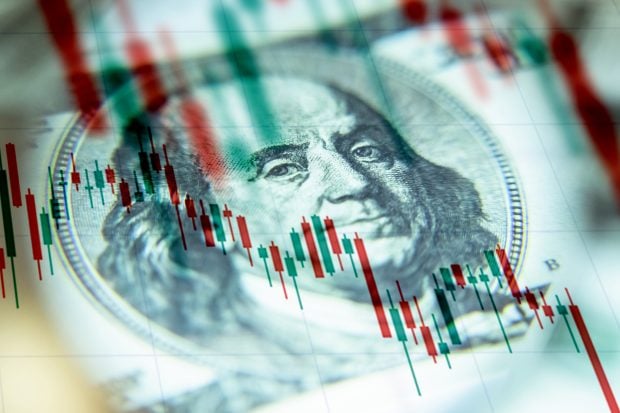The CFPB has painted itself into a corner with its proposed payday lending rule.
|It faces opposition from credit unions and community banks,which say the NCUA's Payday Alternative Loan structure isunprofitable.
|In fact, according to Kinecta FCU President/CEO Keith Sultemeier, who testified atthe CFPB's field hearing in Kansas City the day the proposed rulewas released, PALs don't even break even. He testified hisManhattan Beach, Calif.-based credit union loses $20 on everyPAL.
|That's a big deal, because Kinecta subsidiary Nix Check Cashing has dominated the underserved financialservices market in Los Angeles for years and understands how toserve that risky group. No financial institution can afford to losethat kind of money on a lending product, even if it helps membersand the credit union has $4 billion in assets.
|The NCUA's PAL program permits an APR of up to 28% and anapplication fee of $20 or less. Hank Hubbard, president/CEO of the $33 million One Detroit CreditUnion, told CU Times shortly after the rule wasproposed he doesn't think the CFPB proposal will affect his creditunion's product, because it's a line of credit, not a closed-end loan.One Detroit's payday alternative has an annual fee of $70, muchhigher than the $20 PAL limit, but charges a lower APR of 18%.
|The CFPB said in its release the rule also applies to open-endedpayday products, so One Detroit might not be out of the woods yet.Hubbard also said he was concerned the rule would discouragelenders from even trying to offer a reasonable payday alternativeand, even worse, would expand the illegal lending market.
|Will the final rule stand as proposed or possibly have eventougher standards? Yes, if the CFPB bends to political and publicpressure.
|Immediately after the rule was released, The New YorkTimes published an editorial with a scathing headline: “A LameResponse to Predatory Loans.”
|A few days later, Rep. Debbie Wasserman Schultz (D-Fla.), who chairs theDemocratic National Committee, dropped her support of a bill thatwould block the rule from taking effect after payday loan opponentspushed scathing ads in her district criticizing her for sponsoringthe legislation. This being an election year, her change inposition indicates voters support tighter payday lending rules.Money talks in Washington, but without re-election, that money isworthless.
||The New York Times' editorial board pushed for thefinal rule to limit monthly payments to no more than 5% of theborrower's gross monthly income, which would spread the costs andfees over the life of the loan. The CFPB had originally consideredthat requirement, but the bureau dropped it.
|A loan with monthly payments of 5% gross income or less soundslike your average consumer loan, not an emergency product. Ifborrowers qualified for a personal loan, they'd apply for one.
|That's the problem with payday loans. Payday loan opponentspaint a rosy picture of payday borrowers, describing them ashomeowners who need to make roof repairs or finance carrepairs.
|Perhaps some borrowers fit that description, but I doubt itrepresents the majority or even a sizeable minority.
|Anyone who qualifies for a mortgage and can maintain that largeasset probably has other lending resources available.
|Payday borrowers not only have no other financing options, theysimply can't make ends meet. They're poor. Many of them areflat-out indigent, earning less than their monthly expenses.
|If we really want to find a solution to payday lending, we mustface the fact that many borrowers use the money for basic expenseslike making rent or buying food. Perhaps they couldn't make rentbecause they were hit with an unexpected expense, but that stillmeans their incomes don't allow them to build up savings or a goodcredit score.
|When you can't afford the basics, or are just barely getting by,you certainly can't afford to repay a loan, regardless of how youuse the funds.
|The payday loan market is extremely risky because borrowersoften can't – or because of personal issues won't – repay them.Sure, predatory lenders make the loans more difficult to repay, butif Kinecta's PALs default to the tune of a $20 average loss,there's no private sector solution that protects both the lenderand the borrower. The idea that payday lenders are all greedybastards who would still earn a healthy profit with lower rates andfees is a myth. A new CFPB regulation isn't going to change thatsad fact.
|The government needs to step in and provide a guarantee forlenders, or offer the loans themselves as a safety net for thosewho earn too much to qualify for welfare but still can't earn aliving wage.
|The idea that the government should keep Americans from goinghungry and becoming homeless isn't new.
|I'm sure plenty of readers are bristling at the idea oftaxpayers footing the bill for payday loan borrowers.
|But absent a meaningful increase in the minimum wage or moresubsidized housing and food stamp programs, there doesn't seem tobe another way.
|The government also has the perfect storefront from which tooffer these loans: The post office. Instead of the USPS competingwith credit unions and banks that already offer mainstreamservices, the government agency should be used to provide financialservices Main Street can't and back alleyways shouldn't.
Complete your profile to continue reading and get FREE access to CUTimes.com, part of your ALM digital membership.
Your access to unlimited CUTimes.com content isn’t changing.
Once you are an ALM digital member, you’ll receive:
- Critical CUTimes.com information including comprehensive product and service provider listings via the Marketplace Directory, CU Careers, resources from industry leaders, webcasts, and breaking news, analysis and more with our informative Newsletters.
- Exclusive discounts on ALM and CU Times events.
- Access to other award-winning ALM websites including Law.com and GlobeSt.com.
Already have an account? Sign In
© 2024 ALM Global, LLC, All Rights Reserved. Request academic re-use from www.copyright.com. All other uses, submit a request to [email protected]. For more information visit Asset & Logo Licensing.









